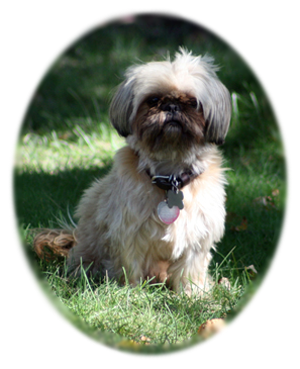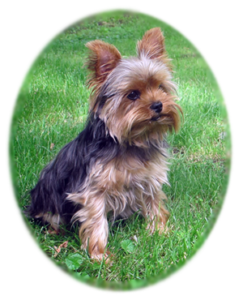
The Shih Tzu is a sturdy, lively, alert toy dog with long flowing double coat of any color and markings. Befitting his noble Chinese ancestry as a highly valued, prized companion and palace pet, the Shih Tzu is proud of bearing, has a distinctively arrogant carriage with head well up and tail curved over the back. Although there has always been considerable size variation, the Shih Tzu must be compact, solid, carrying good weight and substance. Temperament should be outgoing, happy, affectionate, friendly and trusting towards all.
The legend of the Shih Tzu has come to us from documents, paintings, and objects of art dating from AD 624.
During the Tang Dynasty, K’iu T’ai, King of Viqur, gave the Chinese court a pair of dogs, said to have come from the Fu Lin (assumedly, the Byzantine Empire). Mention of these dogs (Shih Tzus) was again made in AD 990-994 when people of the Ho Chou sent dogs as a tribute.
Shih Tzu means lion, and in Buddhist belief, there is an association between the lion and their Deity; thus, the dogs were bred in court.
The Shih Tzu was the house pet for most of the Ming Dynasty.
First classifed as Apsos, but after a ruling by the Kennel Club (England), became a separate breed, culminating with the formation of the Shih Tzu Kennel Club of England in 1935 and admittance to the AKC Stud Book in 1969.
The Shih Tzu is often called “the chrysanthemum-faced dog” because of the haphazard, round-face way their hair grows in the front.


The Yorkie has the general appearance of a long-haired toy terrier whose coat is parted on the face and from the base of the skull to the end of the tail and hangs evenly and straight on each side of the body. The recognized coat colors are Blue and Tan, Blue and Gold, Black and Tan, and Black and Gold. The body is neat, compact and well proportioned. The dog’s head carriage and confident manner should give the appearance of vigor and self-importance. The hair should be glossy, fine and silky in texture.
The Yorkie became a fashionable pet in the late Victorian era and before.
In its beginnings, the Yorkie surprisingly belonged to the working class, especially the weavers; in fact, facetious comments were often made about how the dogs’ fine, silky coats were the ultimate product of the looms.
The Yorkie made its debut at a bench show in England in 1861 as a “broken-haired Scotch Terrier.”
Became known as a Yorkshire Terrier in 1870 after a reporter stated that “They ought no longer to be called Scotch Terriers, but Yorkshire Terriers for having been so improved here.”
The Yorkie traces to the Waterside Terrier, also a “weaver dog.”
Classes for the Yorkie breed have been offered in America since 1878.
A shorkie is a Shih Tzu bred to a Yorkshire Terrier, and yes, we know that there are now many designer breeds out there. But when we decided to start this breed there were reasons for it. We did not just take this breed and throw it with that breed.
How it originally started was that we had a female Shih tzu that we were having trouble getting her bred. So I had to sit back and think what we could do about it and after much consideration I thought why not use our Yorkie stud.
My reasons where that I love the personality of our Shih tzu’s ( now don’t get me wrong ) our yorkies also have wonderful personalities but just in a different way. So I wanted to enhance the personality of a Shih tzu and then on the Yorkie side, well size came into play , also the silky coat. I wanted to see if I could pull the extra loving personality from our Shih Tzu, the hair coat of a Yorkie and get the size in between the two.
I also took some of our best stock !! I didn’t just breed that one with another just because, I was careful in selection. Also neither breed sheds, so that was a huge benefit.
We got great response from our first litter and are still getting quite a few requests these many years later.
If you are looking for something unique then you should surely give the Shorkie a try.

© 2023 Greenwood Puppies. All Rights Reserved. Designed by Milk & Honey Digital.